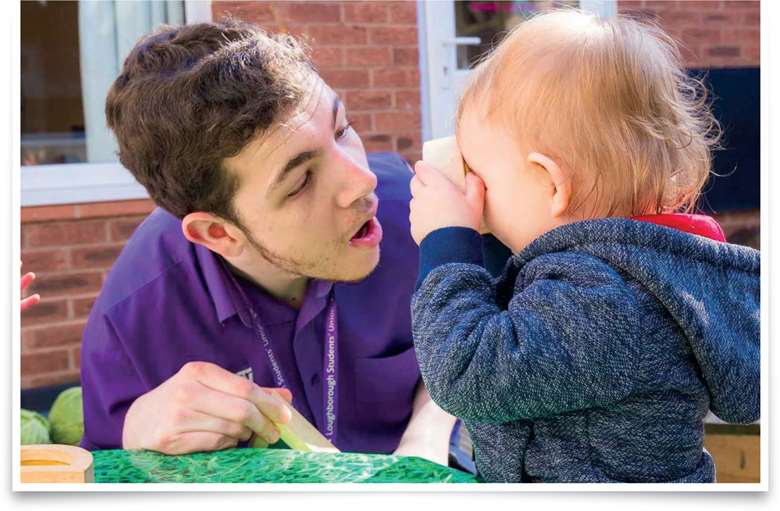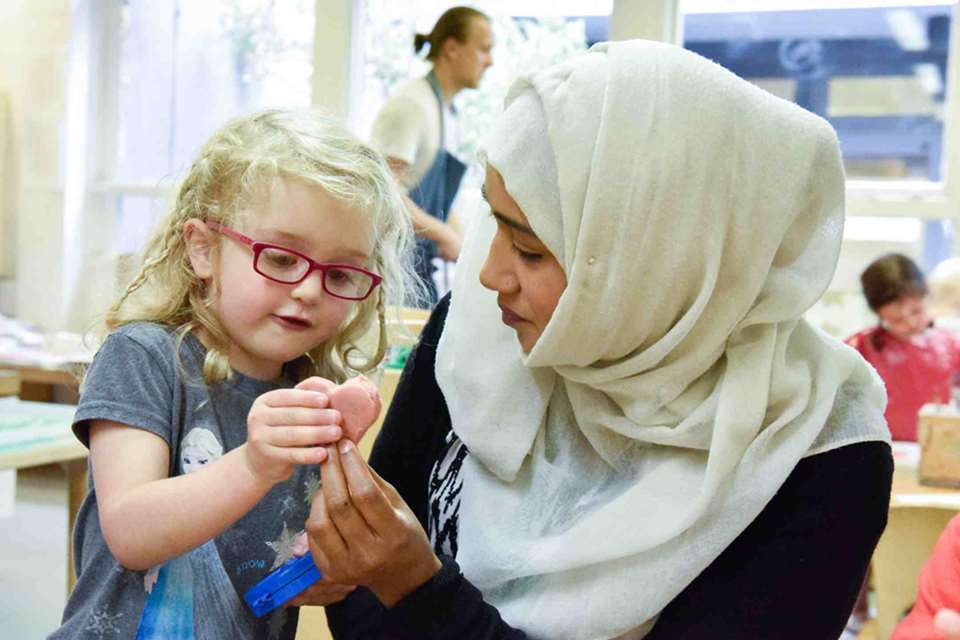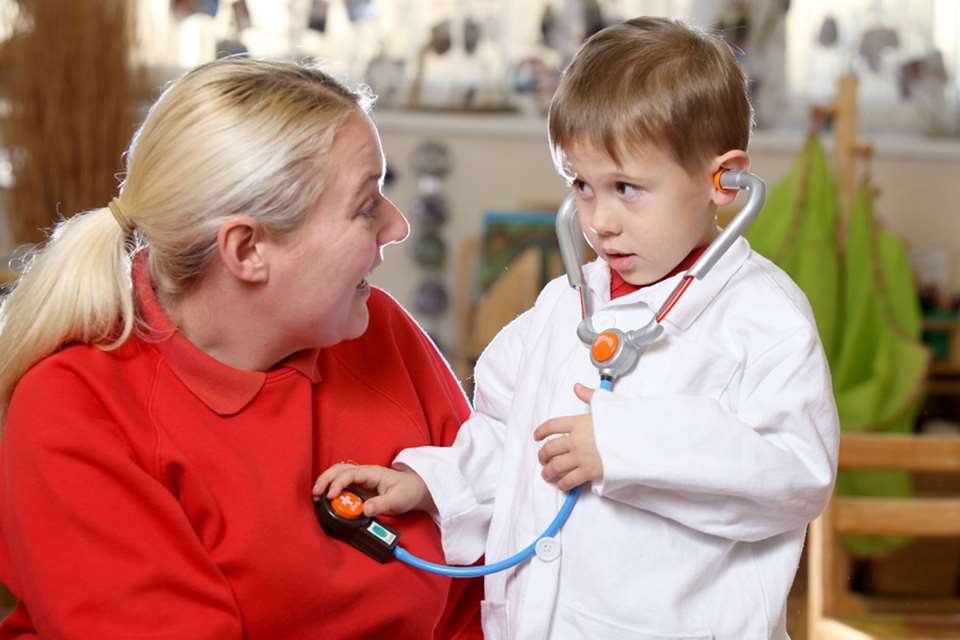Communication & Language: On reflection
Julie Kent, Caroline Farley and Sue Hobson
Monday, September 30, 2019
How settings can improve how they support the Communication and Language (C&L) skills of children as seen through the lens of the new Ofsted judgement ‘Quality of education’. By Julie Kent, Caroline Farley and Sue Hobson

The introduction of a ‘Quality of education’ judgement in the new Education Inspection Framework (EIF) marks an encouraging move away from data-driven judgements towards a more professional dialogue on inspection day and a focus on a setting's curriculum and quality of teaching.
Subdivided into three parts, the new judgement comprises ‘Intent’ (principally curriculum), ‘Implementation’ (curriculum delivery and pedagogy) and ‘Impact’ (evaluation of outcomes).
For high-quality settings with strong reflective leadership, the new framework changes nothing. ‘Best practice’, underpinned by the principles of the EYFS, remains intact, while the new EIF provides reassurances that all elements of early years good practice will continue to be recognised.
Weaker or less confident settings, however, will have to reflect on and improve their practice, and some key questions that will help them with that process are:
Intent What are your curriculum priorities specific to the needs of the children in your setting and how are you going to address them?
Implementation What strategies will you use to address your curriculum priorities and how will you ensure each practitioner understands and supports the intended learning approaches?
Impact How have the teaching and learning approaches in your setting improved the experiences and learning of children, within the environment and of staff?
What this process might look like in practice can be seen through the steady progress made in supporting the Communication and Language (C&L) skills of children at Loughborough Campus Nursery – a 102-place setting run by the university's student union.
The team's progress in this area has been tracked over several years and it is possible to see in their improvements: clear intent, consistent and careful implementation, and a robust and reflective evaluation of impact.
The nursery's focus on C&L is relevant for all settings as it is a priority area of learning within the new EIF. So too are the setting's approaches to leadership and training in identifying and embedding good practice strategies.
As Ofsted's early years handbook makes clear, leaders are expected to ‘ensure that they and practitioners receive focused and highly effective professional development. Practitioners' subject, pedagogical content and knowledge consistently builds and develops over time, and this consistently translates into improvements in the teaching of the curriculum’.
In their examination of leadership, Male and Palaiolgou (2015) note the importance of the value that leaders place on staff learning and development in order for good practice strategies to be embedded.
INTENT
The Loughborough nursery leaders started the process of change by reflecting on their setting and identified C&L as being central to improving the nursery offer and outcomes, given the high numbers of children attending with EAL and/or identified communication needs. They found that their support of children's C&L skills was implemented and monitored inconsistently and was highly dependent on the individual practitioner, rather than being part of a strong nursery-wide approach.
To embed good communicative practice across the nursery, the leaders opted for a whole-setting approach, rather than the didactic, ‘top-down’ method employed in previous training sessions. This collegial style, where managers, practitioners and the trainer are learners together, irrespective of experience, seniority, prior learning and skill levels, has been identified as effective in delivering effective and ongoing change (Hobson and Farley in Kent and Moran 2019).
Implementing change required the nursery to reflect not just on ‘what we do’ but also ‘who we are’. To promote staff self-awareness and understanding, the nursery supported practitioners through:
- individualised approaches to teaching and learning
- ongoing training and mentoring, with the help of a specialist trainer/mentor, to reflect on their own communication and what communication means for children
- working collaboratively to develop their own and others' practice, using non-confrontational strategies to support an appreciation of others', and their own, skills
- peer assessment – a learning tool advocated by many influential practitioners (Nutbrown 2012).
In this instance, the nursery used a format devised by the setting leadership and specialist trainer. The result has been a change of practitioner mindset and new ways of thinking, which are reflected in practitioners' comments, such as, ‘At first people are a bit uncomfortable about being observed, but once we've got across we're not there to judge them we're there to teach them for the benefit of the children and for their learning, they settle down.’
IMPLEMENTATION
Key strategies
The team developed a series of strategies through which to improve their practice, principally to:
- recognise good practice and be able to say why it's good
- understand how to develop children's language for thinking
- understand how to plan for and assess the development of children's language
- know that learning English as an additional language differs from learning a single language, and be able to support children with EAL
- create a whole-setting environment that supports communication
- create and use a bank of objects and visual prompts consistently with all children throughout the session
- use a visual timetable in each room
- create a bank of objects and visual prompts to support group singing and storytimes
- participate in Positive Peer Observations effectively.
Baseline
Before implementing change, it is important to establish how to judge progress and measure any impact. To establish a baseline of staff competency, the leaders and trainer first audited staff levels of engagement, practice and understanding of C&L against a range of indicators, including:
- use of specific strategies
- level of adult language
- signing and symbol use.
This exercise helped the team to recognise that learners have different starting points, and may be unaware of their own level of competency and skills. Group training sessions encouraged practitioners to value everyone's contribution and to celebrate existing good practice. Individual support, with the trainer going at the practitioner's own pace, was used to identify, model and reinforce strategies for scaffolding children's C&L.
Alongside, the practice of peer observation has evolved slowly, starting with the appointment of a communication lead for the setting and each room. All staff are now confident in carrying out and giving feedback on observations, which are carried out regularly and moderated by the C&L leads.
Ongoing peer observations as part of a whole-setting approach:
- has encouraged staff to prioritise C&L through the development of a ‘communication-rich’ environment for children
- enables good practice to be shared and supported
- ensures ongoing monitoring and assessment of staff, who hold each other to account when it came to implementing the key communication strategies.

Clockwise from above: the Explorers Room, Discoverers Room and Investigators Room at Loughborough Campus Nursery
Talking about their improved levels of competence, staff noted:
‘I feel a lot more confident talking to children. I feel as if I'm more equipped with the skills to help them.’
‘It's a whole-setting move forward – that's the difference.’
IMPACT
It is vital to provide an evidence base for any ongoing changes to ways of working, which is why it was a privilege to help the setting reflect on their practice. We set up a focus group which helped the team to move beyond a ‘checklist’ of results to a more reflective approach to judging impact (see box).
C&L PRACTICE: BEFORE AND AFTER
Practice was inconsistent but now follows the same patterns in every room, resulting in smooth transitions for staff and children and good practice across the nursery.
Practitioner language was often overcomplicated in structure, had a limited vocabulary and involved a lot of questions. Now it is more thoughtful, involves more comments and has a wider and developmentally appropriate vocabulary.
Planning for C&L was patchy and did not involve all staff. Now C&L is a strong and consistent thread throughout planning which is based on the ‘Plan Do Review’ model.
Staff communication was limited and tended to focus on practicalities. Now it is much improved. A communication lead in each room ensures practitioners discuss ideas, new learning, successes and challenges.
Team relationships were hampered by staff being protective of their own skills, and there was no process in place for sharing ideas, creating a strong but unspoken sense of hierarchy in each room. There are now systems in place to share good practice and develop new ideas. The atmosphere is more open and appreciative of the skills of others and, in turn, children are more readily able to share their successes and enthusiasms.
Visual prompts were not in evidence and labelling was inconsistent or inappropriate. All staff now wear and use lanyards of symbols to support children's C&L. Song baskets, objects of reference, choice boards and ‘First and Then’ boards are used appropriately.
Observations were handwritten, generally descriptive and lacked in-depth reflection on the individual child's C&L needs. They are now online, shared regularly with parents and show an understanding of each child, as well as a keen awareness and appreciation of how children learn and communicate. Planning is based on these observations and tailored to the child.
Staff confidence in their practice and interactions with children was lacking. Now they speak and listen to the children confidently and attentively. In turn, children are happy to talk with adults and other children.
A thematic analysis (Clarke and Braun 2017) of the group's discussion identified a number of central themes, which provided evidence of real improvements in quality across the environment, relationships and practice. The qualitative findings show improvements in:
The C&L environment
‘The lanyards – the other day a little girl was going through them on the carpet doing the actions – a little girl that I didn't expect it from.’
‘We get feedback from the parents about what the children have learnt, especially the songs.’
‘As soon as we get out the song basket the babies go straight to the blanket.’
‘Definitely for the children with additional needs – the pictures for coat on and coat off have helped, and using first this and then that – they can accept what you're saying and understand it.’
Relationships
‘The repetition makes them feel comfortable.’
‘Last week we had a breakthrough with a child – I got so emotional – it's really good.’
‘A little girl with EAL. She still keeps her coat on because that's her security blanket, but last week in the friendship song she held hands.’
‘The skills have really helped me connect with the children more.’
Ways of working/practice
‘Doing it in little stages gives you the time to get each bit embedded and then reflecting on which bit worked. If we hadn't had time to reflect and trial things it would have been quite demoralising – we did a little bit and people started to embrace it.’
IMPLICATIONS
The process of change at Loughborough Campus Nursery provides some important learning points for settings currently reflecting on Ofsted's expectations under the new framework:
- Teaching and learning approaches that work for children also work for adults – EYFS themes and principles could be applied to CPD. A pedagogical approach (Coughlin and Baird 2013) understands the need for active learning, persistence and engagement, as well as critical thinking which interrogates practice and informs capacity-building within the workforce.
- Self-awareness of all staff and self-assessment are key for benchmarking and providing an insight into progress and impact.
- Peer assessment, accountability and collegiality are vital for continuous improvement.
- Anning and Edwards' view (2006) is that ‘Children learn to love learning through being with adults who also love to learn’. As a result of careful reflection, this setting continues to address its quality of education through intentional implementation and monitoring of approaches and strategies that support the enabling communication environment with a clear impact on staff and children alike.
MORE INFORMATION
- Anning A and Edwards A (2006) Promoting Children’s Learning from Birth to Five: Developing the new early years professional. OUP
Clarke V and Braun V (2017) ‘Thematic analysis’, The Journal of Positive Psychology (12) 3, pp297-298 - Coughlin AM and Baird L (2013) Pedagogical Leadership. London Bridge Child Care Services & Kawartha Child Care Services
Foundations for quality: the independent review of early education and childcare qualifications – Nutbrown Review (2012). The final report: https://dera.ioe.ac.uk//14719 - Kent J and Moran M (eds) (2019) Communication for the Early Years: A holistic approach. Routledge
- Male T and Palaiolgou I (2015) ‘Pedagogical leadership in the 21st century: Evidence from the field’, Educational Management, Administration and Leadership, 43 (2), pp214-231







